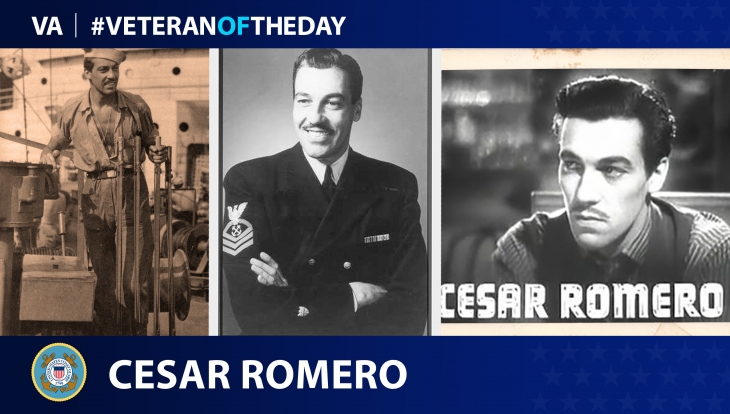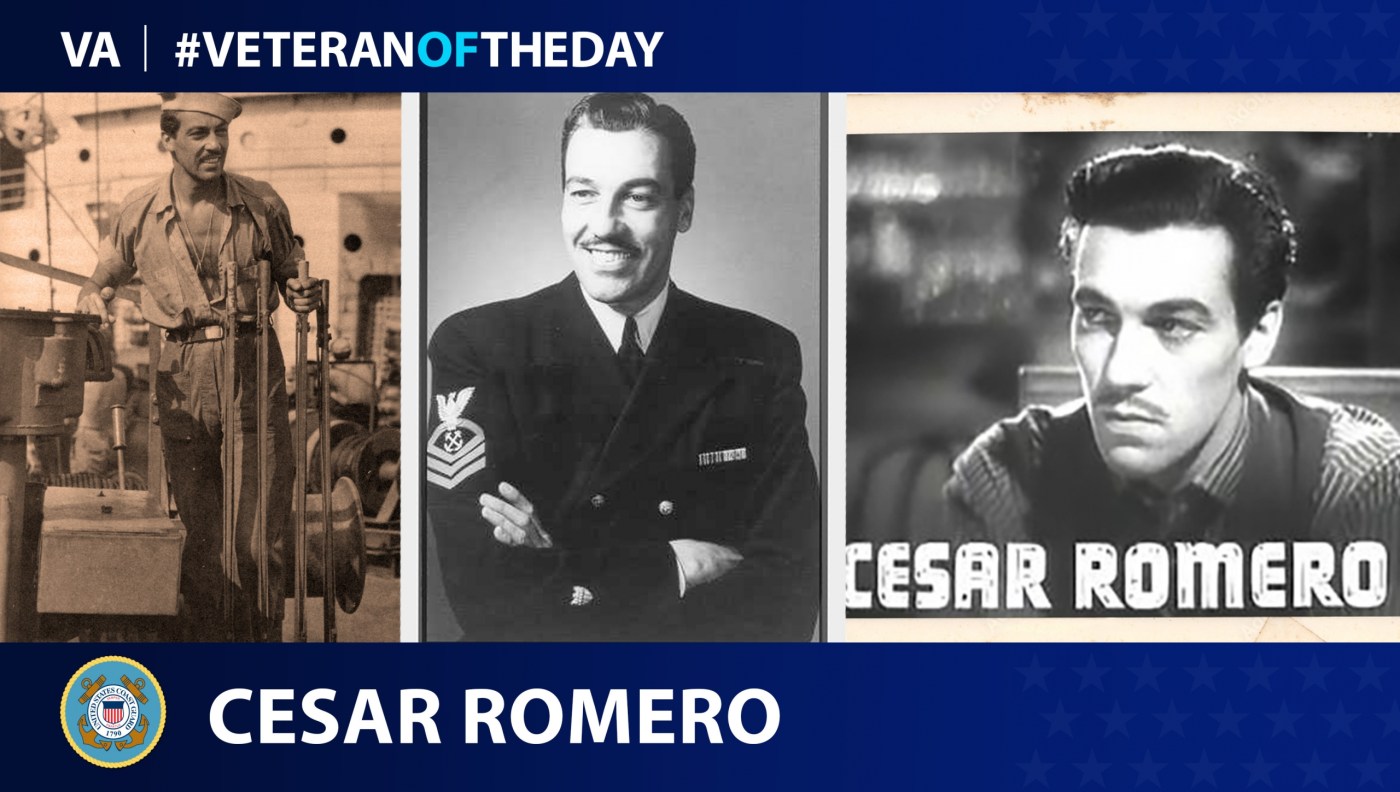
Today’s #VeteranOfTheDay is Coast Guard Veteran Cesar Julio Romero Jr., who served during World War II and was a dancer and actor with a long career.
Cesar Julio Romero Jr. was born in New York in February 1907. The grandson of Cuban poet and revolutionary José Martí, Romero was born into a family of wealthy immigrants who worked in the sugar export business but lost much of their money in the stock market crash of 1929. Romero considered a career in banking until he was approached by socialite Elizabeth Higgins, who asked him to become her dance partner in 1927. Although Romero had no formal training, he was a naturally talented dancer, and the pair performed together until 1929, when an injury ended Romero’s dancing career.
In the 1930s, Romero moved into theatrical productions and motion pictures, making his screen debut in the 1933 mystery film “The Shadow Laughs.” Tall and handsome, he fit the classic image of the “Latin lover.” Despite his good looks and acting ability, Romero found himself typecast and rarely appeared in lead roles. He starred as “The Cisco Kid” in a series of six westerns released between 1939 and 1941.
During World War II, Romero took a break from acting. He enlisted in the U.S. Coast Guard in 1942 and deployed to the Pacific Theater. Romero reported for duty aboard the assault transport USS Cavalier in 1943 and took part in the Allied invasions of Tinian and Saipan. A hard worker who requested no special treatment, Romero was admired by his shipmates. When circumstances allowed for recreation, he would help to put on a variety show for the crew. At the end of the war, Romero was honorably discharged at the rank of chief boatswain’s mate.
After the war, Romero returned to acting. Throughout a career that spanned seven decades, he played a wide variety of characters but may be best remembered for his appearance in the 1966 “Batman” television series, in which he played the part of the villainous Joker. In contrast to later, darker portrayals of the character by other actors, Romero’s campy version of the Joker was a clown rather than a killer. Years after “Batman” went off the air, fans would stop Romero on the street and ask him to duplicate the Joker’s distinctive laugh, a request he readily obliged. He refused, however, to shave his signature mustache while playing the role, forcing makeup artists to simply cover it up with white face paint; it can still be seen in close-ups.
Romero continued to work into his 80s, making film and television appearances as late as the 1990s; two of his projects were released posthumously. He died on Jan. 1, 1994, at the age of 86.
We honor his service.
Nominate a Veteran for #VeteranOfTheDay
Do you want to light up the face of a special Veteran? Have you been wondering how to tell your Veteran they are special to you? VA’s #VeteranOfTheDay social media feature is an opportunity to highlight your Veteran and his/her service.
It’s easy to nominate a Veteran. Visit our blog post about nominating to learn how to create the best submission.
Veterans History Project
This #VeteranOfTheDay profile was created with interviews submitted to the Veterans History Project. The project collects, preserves, and makes accessible the personal accounts of American war Veterans so that future generations may hear directly from Veterans and better understand the realities of war. Find out more at http://www.loc.gov/vets/.
Writer: Stephen Hill
Editors: Theresa Lyon, Annabelle Colton
Researcher: Patrick E. Woods, Giacomo Ferrari
Graphic Designer: Philip Levine
Topics in this story
More Stories
This week’s Honoring Veterans Spotlight honors the service of Army Veteran David Bellavia, who received a Medal of Honor from the Iraq War’s deadliest operation, the Second Battle of Fallujah.
This week’s Honoring Veterans Spotlight honors the service of Army Veteran Scotty Hasting, who served in Afghanistan.
This week’s Honoring Veterans Spotlight honors the service of Army Veteran Roy Sheldon, who served in 97th General Hospital in Frankfurt, Germany.






